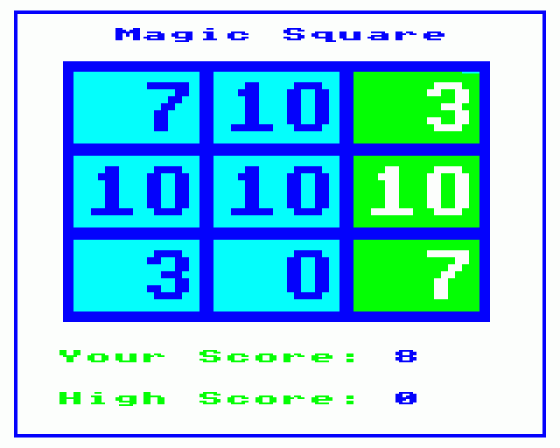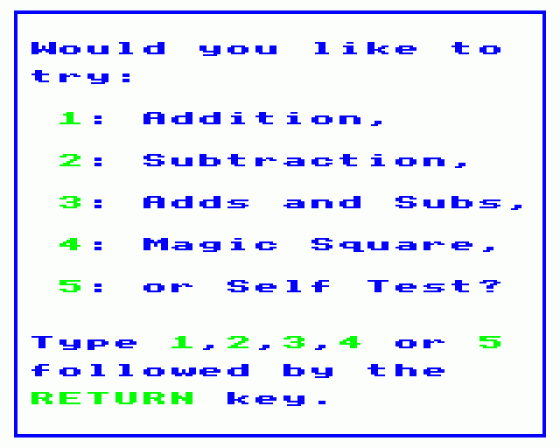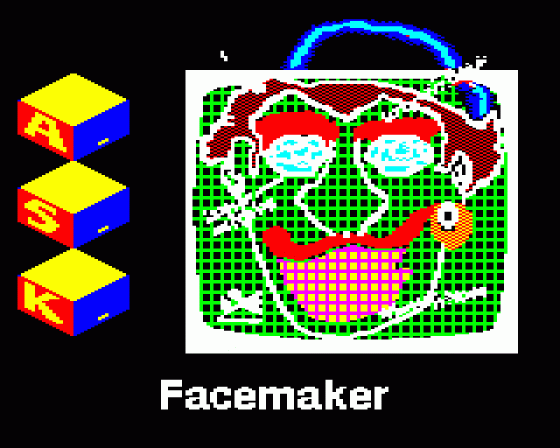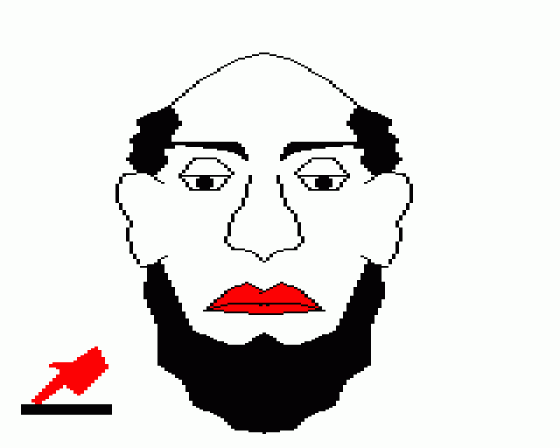
The Micro User
 1st January 1984
1st January 1984
Categories: Review: Software
Author: Wendy Cook
Publisher: Acornsoft/ASK
Machine: BBC/Electron
Published in The Micro User 1.11
Wendy Cook evaluates four new educational programs
The educational software from ASK consists of four tape packages of games for three to 12-year-olds. Each contains the cassette and a small information booklet about how to load and play the games and about their educational value.
The games load in modules, taking about four minutes to load in. which seems a long time if they are to be used in the classroom. But they are extremely well protected and defy attempts to transfer them to disc.
Fundamentally, all the games are "driven" in the same way, using a limited number of keys. This is an advantage because, once a child is familiar with driving one package, he will be able to transfer this familiarity to the others.

The only quibble I have with the way the programs are organised is that most of them do not give you the choice of returning to the menu at the end of a game. So unless you ESCAPE back to the beginning, the same game will come up ad nauseum.
A criticism from the hardware side is that the BREAK key is not disabled, which could be hazardous with young children on the loose.
Facemaker by Gloria Callaway
A literacy game for five to 12-year-olds.

The rationale behind Facemaker seems to be that children enjoy drawing faces and so they will enjoy a computer program which does the same.
Dubious this may be, but I suspect children will be amused by the computer's stiff efforts to draw Aunty Kathleen or whoever.
There is a lot of reading involved in this program, as the children have to read about various features before selecting what the computer should draw.
I suspect that many of the younger age-group - say, five and six year olds - would need help from an older child or adult.
As the reading is only slightly structured and as there is such a lot of vocabulary that is likely to be new, I doubt whether this really is a valuable tool for improving reading.
What it does provide is an intensely interactive situation where the child can readily see his responses controlling the computer.
Any educational value in the program probably lies in the fact that the child learns about interacting with a computer program.
Educational value aside, the game is fun and it holds your attention. But I am very doubtful whether it would do so for more than a few goes.
The blurb in the booklet says that this is not a game to keep the children amused over a wet playtime, but it strikes me that this is exactly the use to which it would be best suited.
The other children would have a wonderful time telling "the driver" to put earrings or a pompon hat on the headmaster.
So, for a classful of children, maybe a good idea for fun and class discussion. But it would probably palltoo quickly to make it a worthwhile expenditure for a family.
Let's Count by Michael Holt
Number games for children of three and over.
The games are based on sound educational principles. Each one demands progressively more complicated mathematical skills.
The first game deals with matching objects, the second with matching objects to numbers, the third with ordering numbers and the last with "greater than" and "less than".
All the games can be played with numbers in the ranges 1-3, 0-4, 5-9 and 0-9. Introducing the concept of zero is a valuable feature as it is often neglected when we introduce children to numbers.
Treasure Island, the first of the games, plays jolly tunes and pops ships, with various numbers of shields on their sides, onto a sea dotted with treasure' islands.
Your job is to send the ships to the island with the same number of treasure chests on it.
The child practises matching skills - matching the number of shields to the number of chests without necessarily being able to count them. This is an important skill to acquire in the understanding of numbers.
The only snag with this game is that often the first ship which appears has zero shields on it, which is a bit confusing at first. But on the whole, a useful exercise and quite good fun.
Space Stations begins life with one big disadvantage - the most anguished rendering of the Star Wars theme ever heard. After two goes 1could stand it no longer.
That aside, the idea is to send the rocket with three windows to the space station with the number three on it, and so on.
Here the child learns to associate particular numbers of objects with certain numerals. Again the philosophy is sound and the game quite a good one for young children.
The third game, Roll-a-Ball, deals with ordering the numerals, such as 2,3.5,7.
The child sends a ball rolling down alleys to knock down each number successively, beginning with the smal lest. The sound effects are very satisfying and this is another game that is quite good fun.
Unfortunately, the last game in the package, Which Way?, is by far the weakest.
The game is designed to introduce the concepts of more than, less than and equal to.
A hopper of red and blue beads appears and the beads have to be sent down the appropriate chute - more reds than blues, more blues than reds, reds and blues equal. It is quite tricky to decide quickly and, as the beads won't go down the wrong chute anyway, it is much easier to just see which chute they will go down without bothering to count them at all.
I'm sure I'm not the only delinquent who will spot this!
Furthermore, once at the bottom of the chute, the beads are separated out into blues and reds but not in such in a way that you can easily see which beads there are more of.
The game doesn't even have the saving grace of being fun. It lacks pace and frankly I found it boring.
Overall, the games in this package are quite good - no more. And, although the educational thinking is sound, I would question whether such early concepts are best acquired using a computer or through concrete experience.
Even if the computer has an additional role to play at this stage, I suspect these games are not really exciting enough to fulfil it satisfactorily.
Number Puzzler by Mike Thomas
Number games for four to 12-year olds
This package was definitely my favourite. The audio graphics are intriguingly unusual and sound a bit like our two-year-old son singing into a toothmug full of bubblebath - it does happen, really!
There are basically three options in this package- Additions, Subtractions and Additions and Subtractions (all variations on the same theme), Magic Squares and Self Test.
The first three games display "Bingo cards" of nine or 36 numbers and can all be played either by two people or as human v machine.
The latter participant, I may add, plays with devilish and mind-boggling speed and, I suspect, is not above indulging in a little skullduggery here and there.
At the bottom of the screen you are dealt two cards which you can either play as they stand or use the sum or difference of them. For instance with five and three, you might also use two and eight.
The values you choose change colour on the bingo card and the aim is to get three numbers in a row while blocking your opponent's efforts.
This is a game of quick-fire mental arithmetic which also involves strategies and tactics. It is fun and probably tones up those flabby brain bits you never knew you had.
Seriously, it is a good tool for training mental agility. It not only speeds up mathematical processes but helps learning, using and switching psychological strategies of searching, estimating and calculating.
The Magic Square program displays a nine square grid with three numbers already filled in.
Your job is to complete the grid so that - hopefully - all the rows, columns and diagonals have the same total.
The score is accumulated over three games, the almost impossible aim being to score over 100. This game is a good test of composition of number - that is, knowing how a number such as 13 can be split up in different ways, 8+4+1, 5+2+6, etc.
More obviously, it is a real test of thinking skill, as you need to hold a partial solution in mind while juggling with its implications for other lines.
Self Test simply requires answers to 10 sums, such as 3+4 or 76—28. Your score and time are kept.
It is disappointing that the speed of presentation does not vary whether you select SLOW or VERY FAST.
But at the end, when the score is given, it may say: "That was better than SLOW." It would be more of a challenge to have a faster presentation available.
> The games in this package are challenging, undoubtedly educational and great fun. How four-year-olds would cope with much of the package is dubious, but I think children aged seven plus would enjoy it very much.
Hide & Seek by Gloria Calloway
Memory and literacy games for five to 12-year-olds.
This package really concentrates on the younger age groups. It is another one produced by Gloria Callaway bunt beats her Facemaker into the proverbial cocked hat.
> Basically the games consist of a grid of six or nine boxes into which different objects are placed. Then, accompanied by happy little tumming sounds, pink and white shutters descend, and you try and remember what the heck went where.
There are several variations on this theme with varying degrees of trickiness, but they are all good fun and quite absorbing. The objects vary from ele phants to geraniums, from rectangles to parrots.
In one game, as the objects are being hidden away, their names are printed beside them. Later the blinds are drawn back to reveal one object missing and the child steps through the various labels to find the right one.
> The final variation is very similar to this except that the child has to spellout the answer, so practising spelling as well as reading and memory skills.
The first time I tried this one the missing object was a church and, when I typed the answer, it played some nice English church music for me.
Next time around, when the green triangle was missing, I expected a bit of Schoenberg, but alas I got the same old church music.
> Actually, the memory skills these games exploit are extremely valuable when learning to read, as are the skills of categorising and labelling which the child is bound to use to aid his memory.
Categorisation is encouraged by the use of obvious categories, such as birds, buildings, shapes, which in some games appear on separate lines. For example, one grid contained pictures of:
cat square church elephant rectangle house bird triangle hut
> The games where the player himself hides the objects arc particularly useful for developing various feature-based strategies for recall.
For example, you can hide all the heavy things in the bottom squares, all the green things on the left and so on. I reckon this package represents a sound investment. It will play more memory games than any parent could stand and makes sound educational sense.
Moreover, it is jolly good fun. Of all the packages, this is the one I will use with my pupils.







